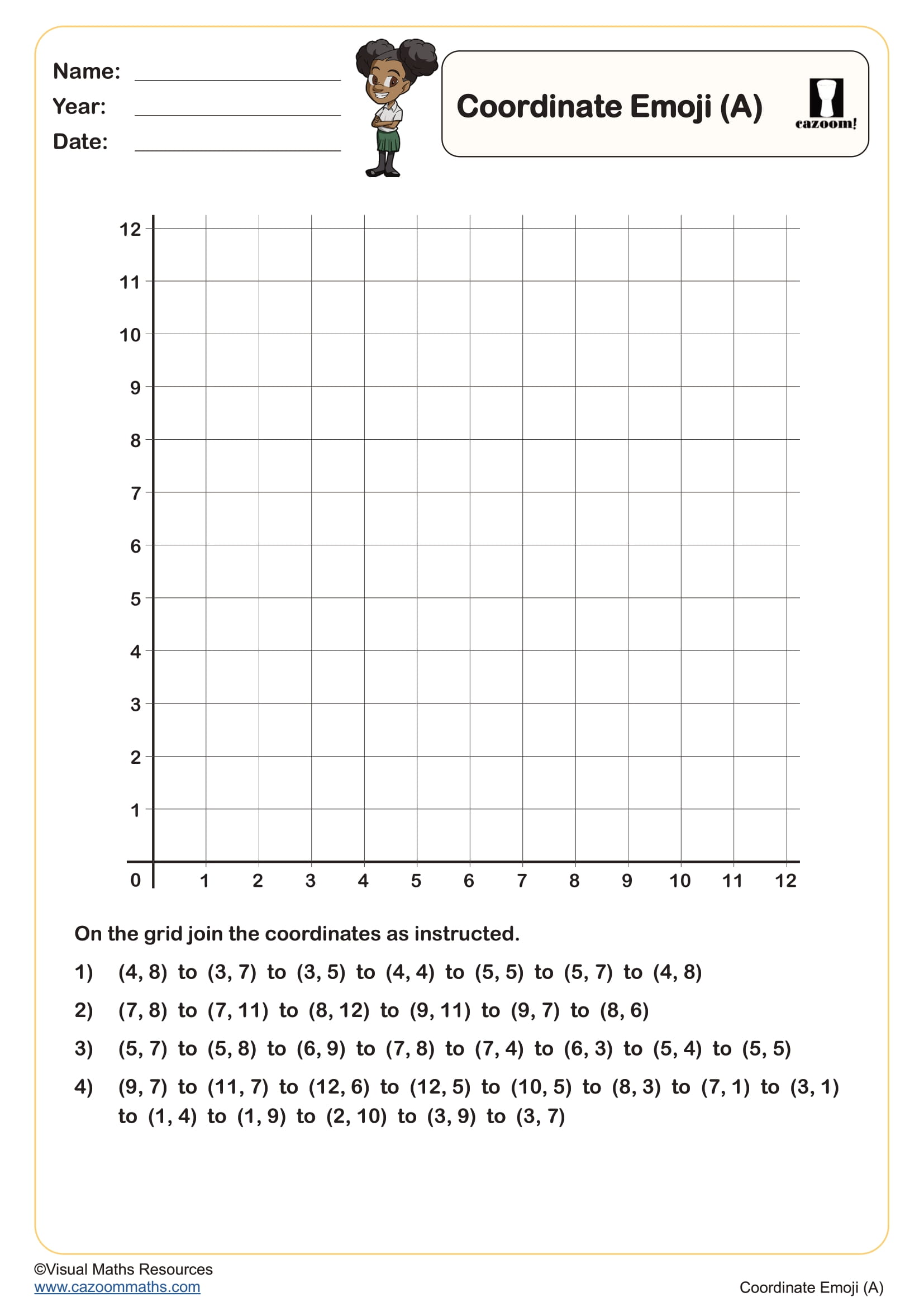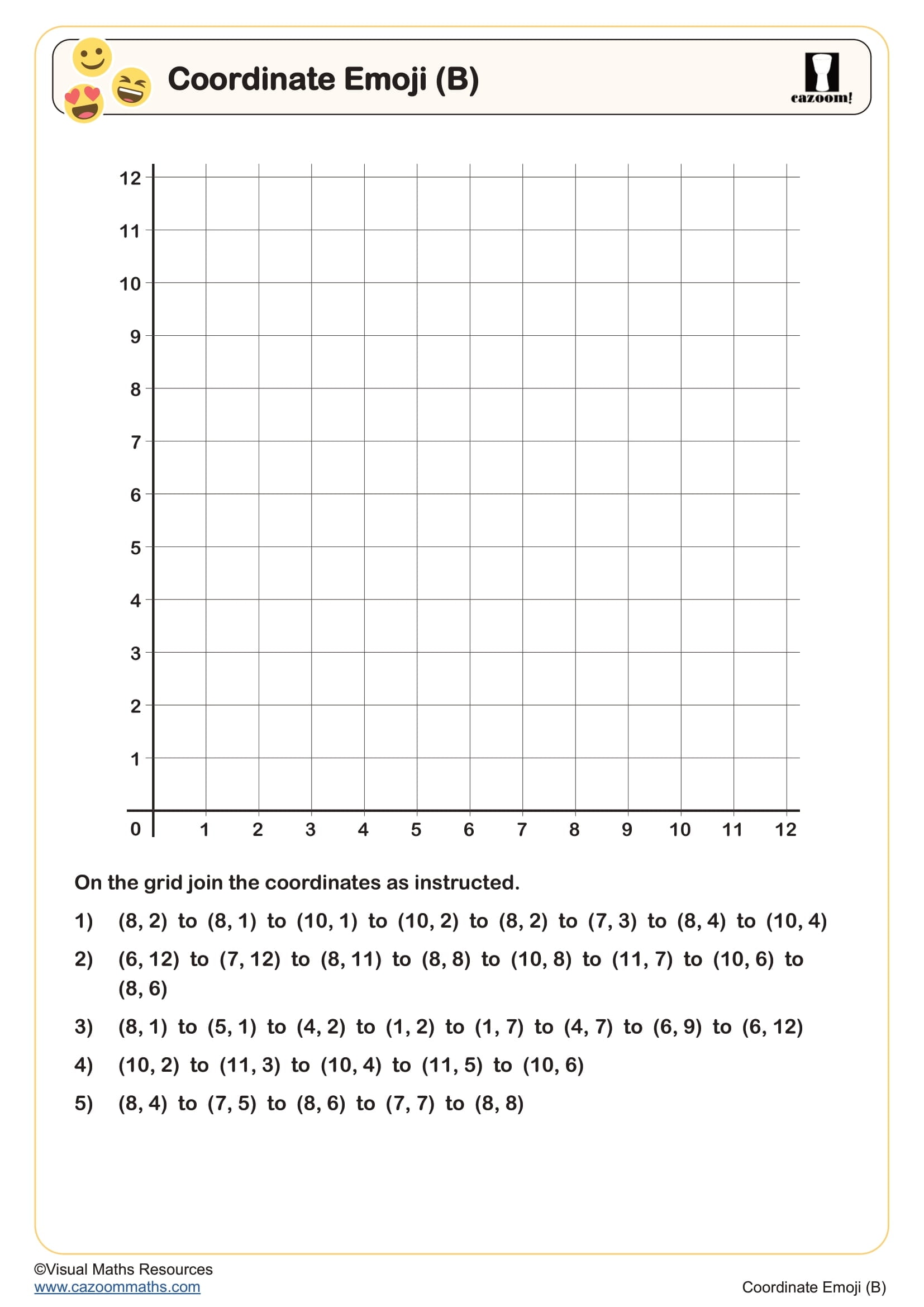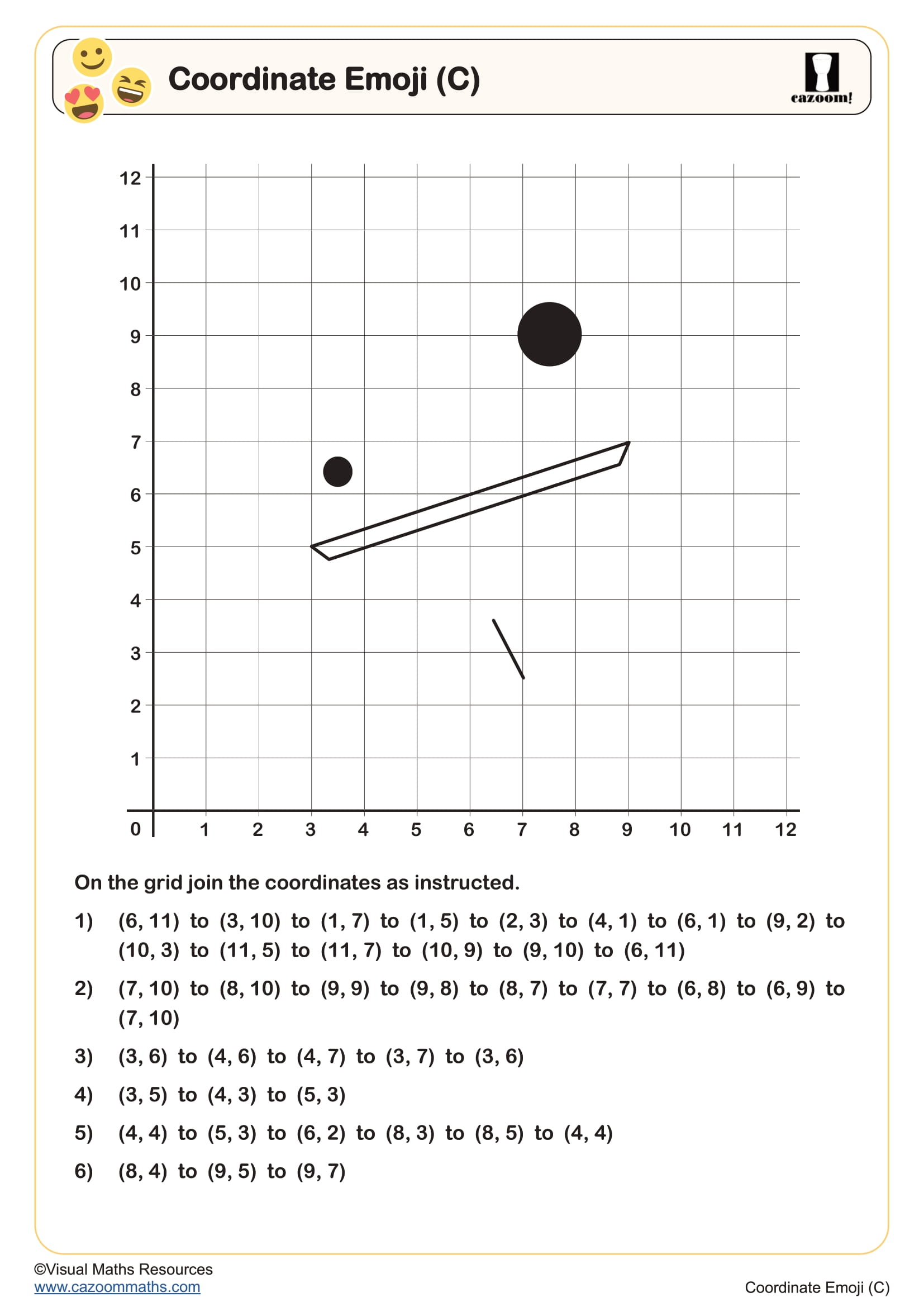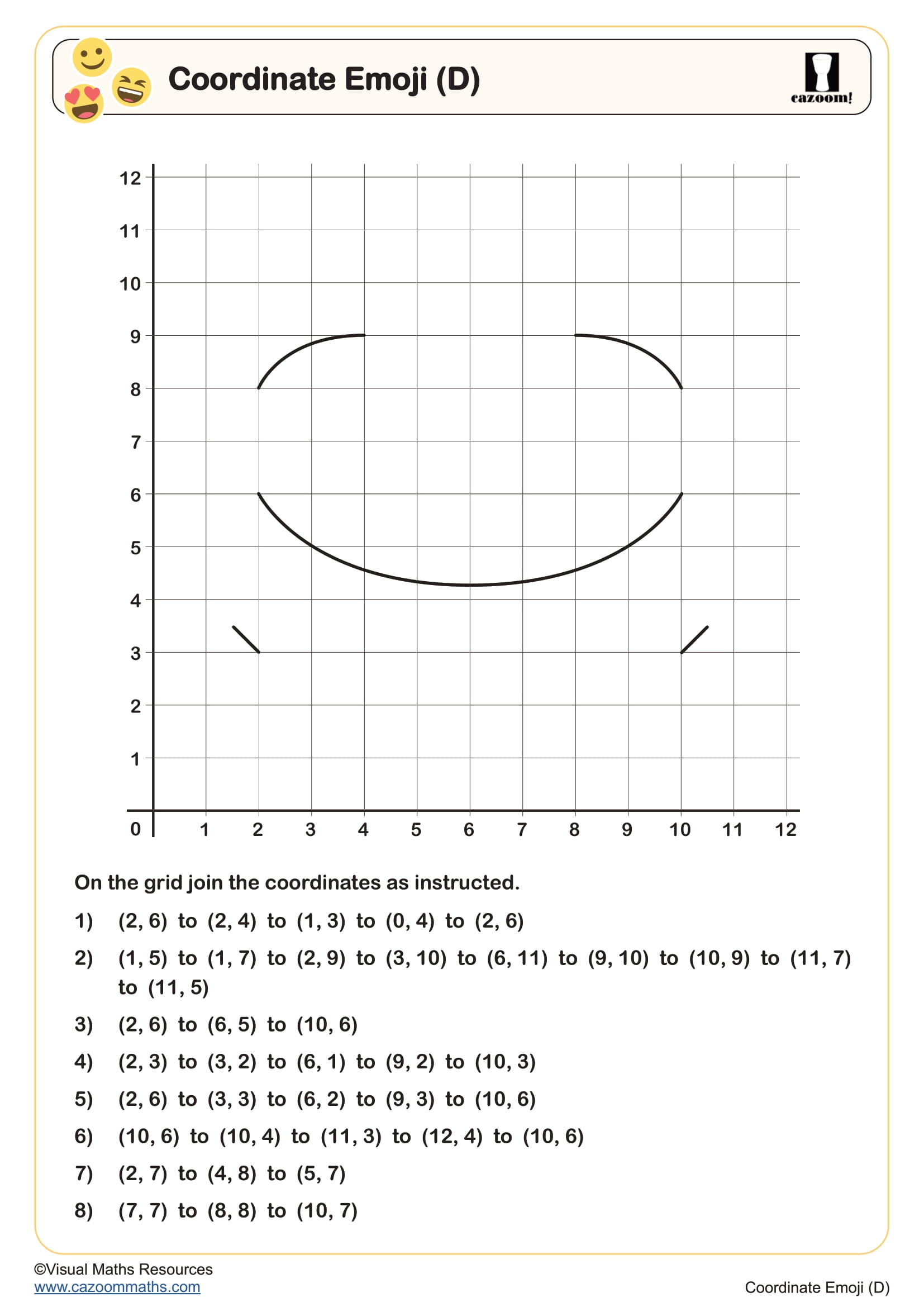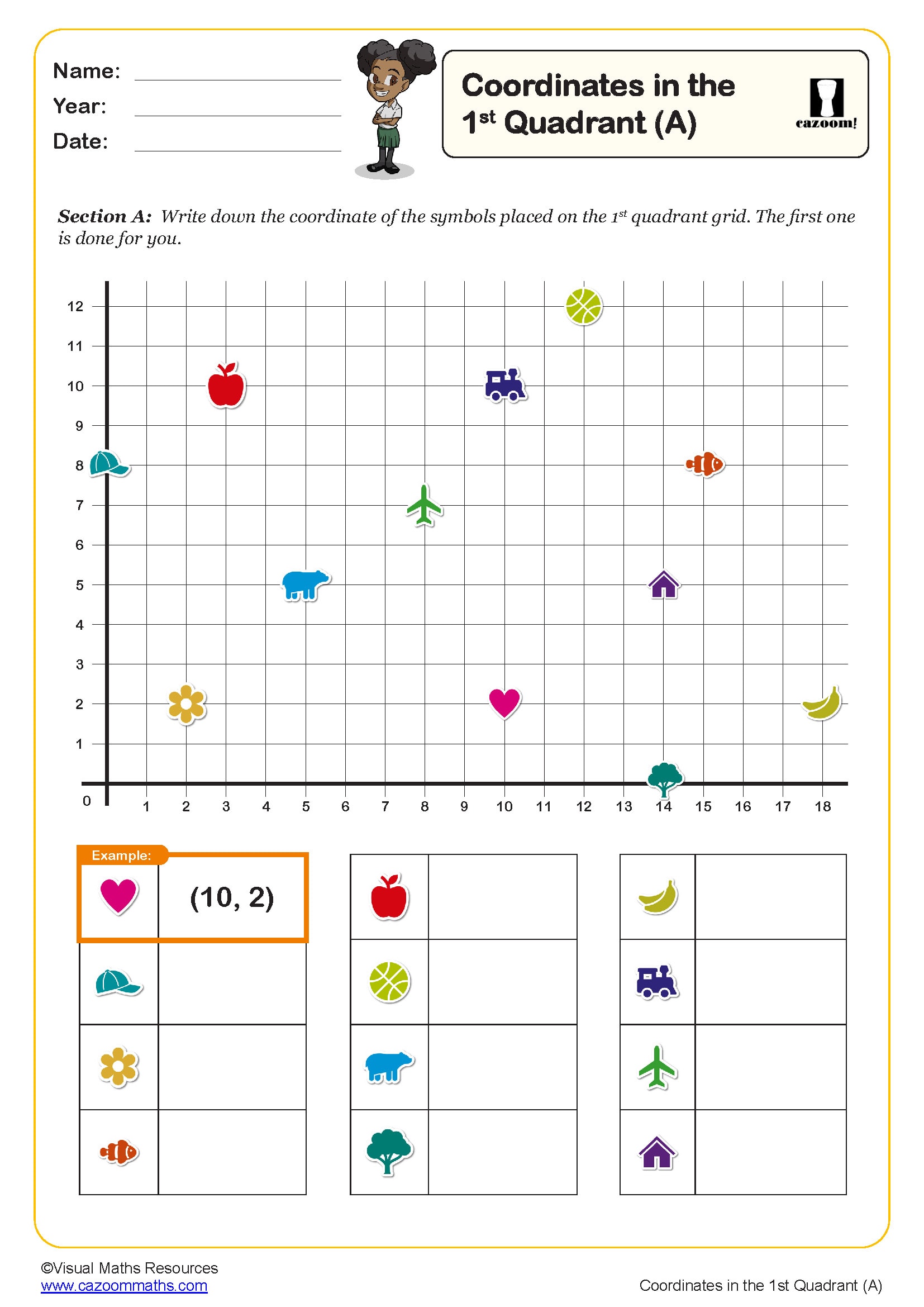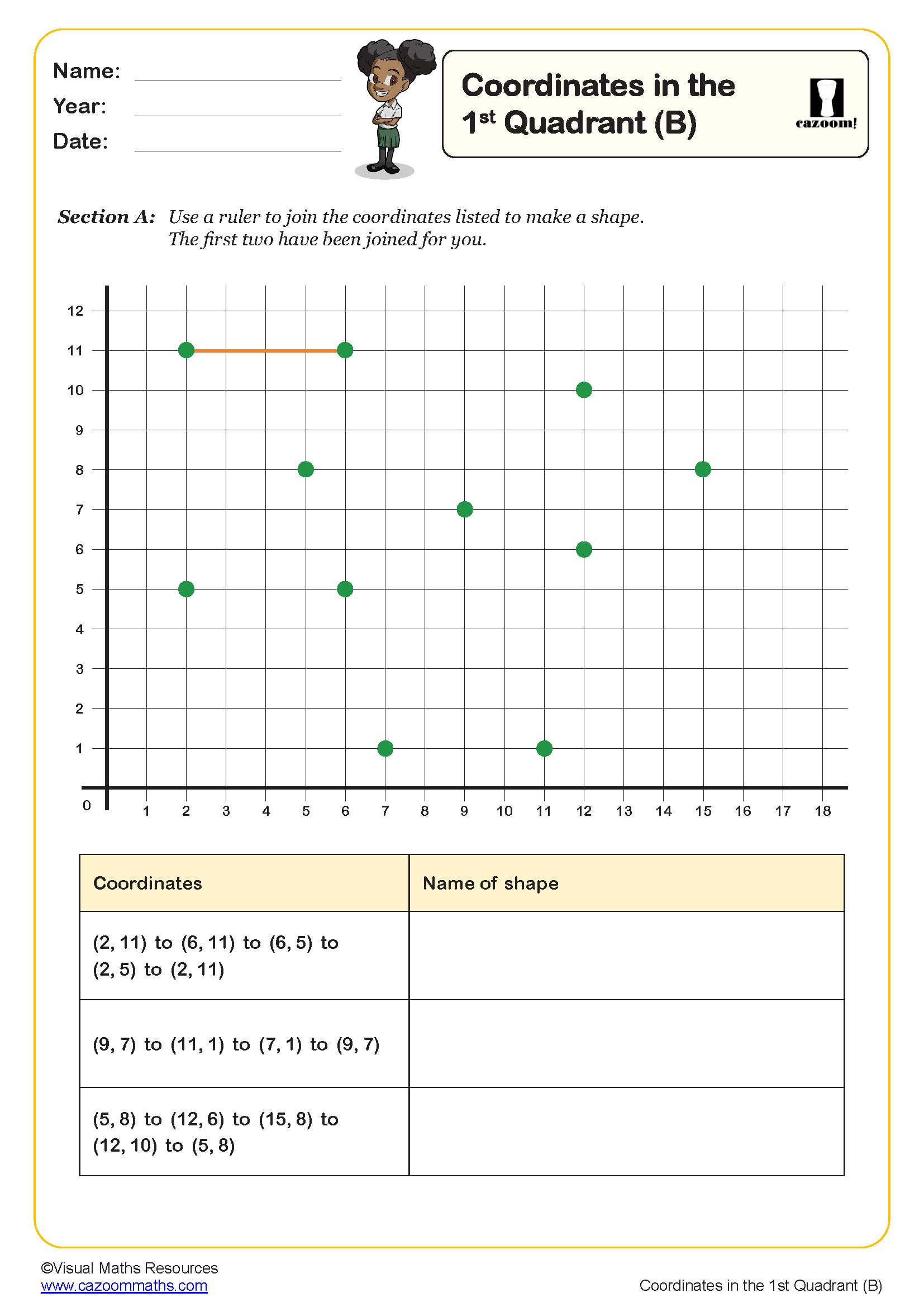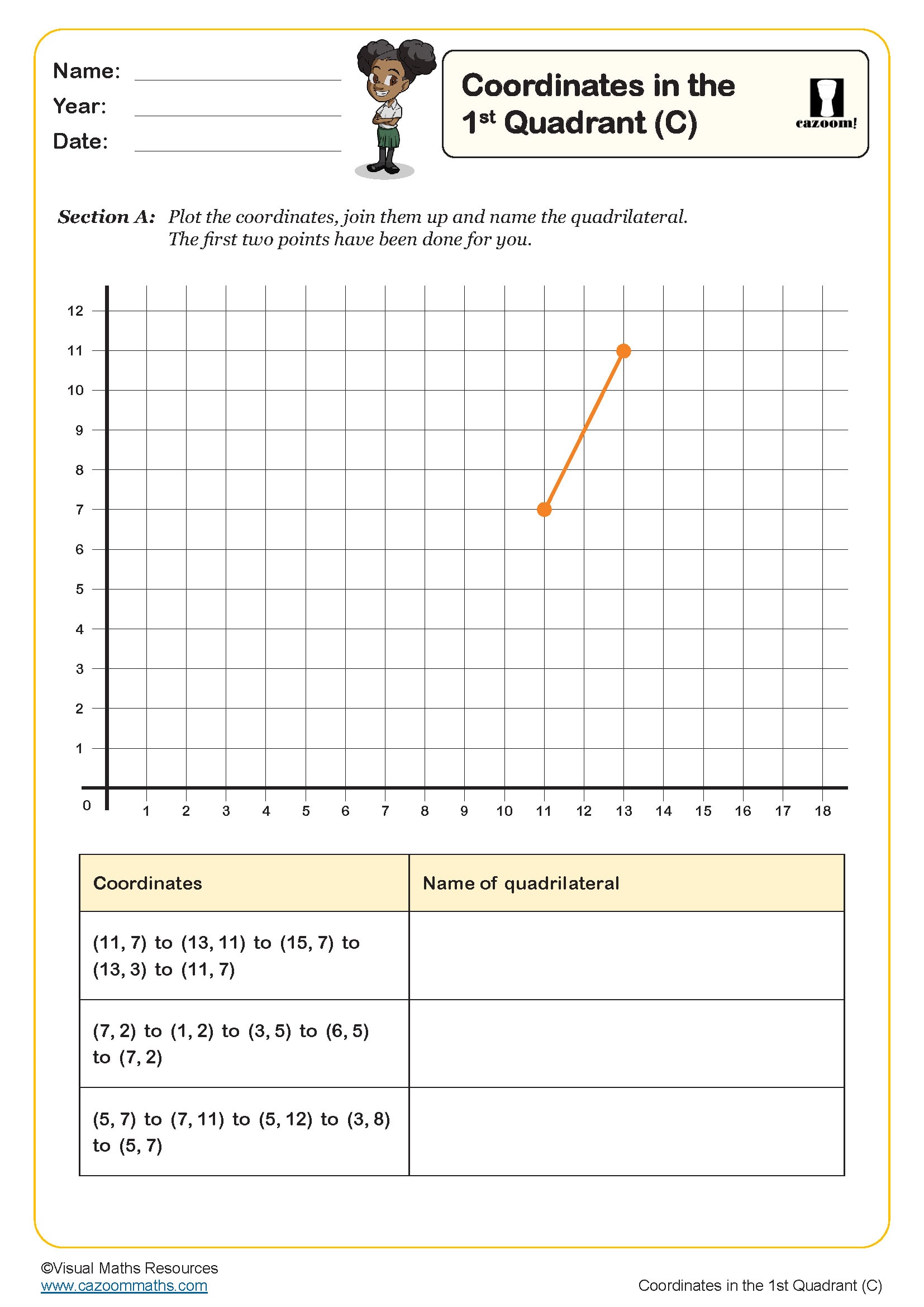Year 4 Position and Direction Worksheets
Essential Year 4 Position and Direction Practice Worksheets with Step-by-Step Solutions
Our worksheets stand out because they progress systematically from basic directional concepts to more complex coordinate work. Each of these worksheets is created in ready-to-use, printable PDF formats and includes detailed solutions that show students exactly how to approach spatial reasoning problems, making our coordinates activities particularly effective for independent learning. Download our Primary School Geometry resources right away to make the learning process fun and engaging!
Core Spatial Skills Developed Through Our Position and Direction Resources
Position and direction in geometry are essentially about understanding where things are located in space and how they move or turn - think of it like giving someone directions to find a treasure on a map! We teach students to describe exact locations using coordinates and grid references, while also helping them master movements like quarter turns, rotations, and compass directions that are surprisingly useful in everyday life.
Our expert team has included considerable depth in these worksheets while keeping them accessible for Year 4 students! The progression moves from simple left/right orientation through to grid coordinates and route planning. Students particularly enjoy the treasure hunt activities and map-reading challenges. These exercises develop essential skills, such as clockwise/anticlockwise rotation, basic coordinate skills, and precise positional language, which form the foundation for future geometry work.
Why Year 4 Students Benefit from Structured Position and Direction Practice
Consistent exposure to directional vocabulary and coordinate systems creates neural pathways that support problem-solving across multiple areas. These worksheets provide the systematic practice needed to:
• Master essential directional vocabulary (forwards, backwards, left, right, clockwise)
• Develop accurate coordinate plotting and reading skills
• Build confidence with grid references and map interpretation
• Strengthen spatial reasoning for future geometry topics
• Improve the accuracy of following instructions through our "Can You Follow Instructions" worksheet activities
Real-World Connections: Where Students Apply Position and Direction Skills Daily
This core geometry concept connects directly to our everyday experiences. These skills appear throughout geography lessons, PE activities, and even technology education. We've observed genuine excitement when students recognise these connections, particularly during cross-curricular projects involving:
• Reading maps and giving directions during school trips
• Understanding compass points in geography and outdoor education
• Following recipe instructions and craft project guidelines
• Playing strategic games and sports requires spatial awareness
• Programming robots and understanding coding movement commands
• Creating artwork with precise positioning and pattern work
